1. Moods
1.1. Gravity of Moods
1.1.1. The more you are in a certain mood the more you will attract that mood to you
1.1.2. That mood pulls in your thoughts, memories and feelings associated with it
1.1.2.1. And triggers behavior accordingly
1.1.3. Moods can become chronic foundations
1.2. Change your moods
1.2.1. Act as if
1.2.1.1. You are in a good mood .... and you will be
1.2.1.2. Take Action
1.2.1.2.1. Activates Left frontal lobe
1.2.1.2.2. Moves you into feeling good
1.2.2. Maximize mood time
1.2.2.1. Maximize the time you spend in a mood you want to be in
1.2.2.1.1. Rewires your brain to be there
1.2.3. Nature Light
1.2.3.1. Exposure to natural light promotes good mood!
1.2.4. Exercise
1.2.4.1. One of the easiest ways to promote neuroplasticity
1.2.5. Construct narratives
1.2.5.1. Narratives that help you
1.2.6. Wiring +ve
1.2.6.1. 2 way street between
1.2.6.1.1. Mood
1.2.6.1.2. Thinking
1.2.6.2. Practice changing your moods/thinking consciously
2. 8. Resiliency and wisdom
2.1. 3 Cs of dealing with stress
2.1.1. 1. Commitment
2.1.1.1. Invested in what I am doing
2.1.2. 2. Control
2.1.2.1. I am At cause
2.1.2.2. I can control this
2.1.3. 3. challenge
2.1.3.1. Opportunity to Act
2.1.3.2. Not a crisis to defend from
3. Mindfulness
3.1. Meditation
3.1.1. Observing your thoughts, feelings and emotions without judgment
3.1.2. Middle PFC is involved with
3.1.2.1. Self observation
3.1.2.2. It is the center of metacognition
3.1.2.3. Makes you feel more present, relaxed and in harmony
3.1.3. Mindfulness Meditation increases the thickness of middle of PFC
3.1.4. Mindfulness practice
3.1.4.1. Cultivates +ve feelings
3.1.4.2. Has +ve influence on immune system
3.2. Labelling your emotions
3.2.1. Activates left PFC
3.2.1.1. REduces anxiety
3.2.1.2. Tames Amygdala
3.2.2. Direct correlation between mindfulness and neural activity in left PFC
3.3. Helps you rewire your brain with what you most desire
4. Firing the cells together
4.1. You can rewire your brain by
4.1.1. your thinking
4.1.2. Your feeling
4.1.3. Your behavior
4.2. Each Neuron
4.2.1. Connected to 10,000 other neurons
4.2.2. Communicate with each other through Neurotransmitters
4.2.2.1. 80% of activity comes from
4.2.2.1.1. Glutamate
4.2.2.1.2. GABA
4.2.3. More often a connection is activated
4.2.3.1. Stronger the wiring/connection between those neurons
4.3. Other neurotransmitters
4.3.1. Seratonin
4.3.1.1. Keep brain activity under check
4.3.2. Norepinephrin
4.3.2.1. all about attention
4.3.3. Dopamine
4.3.3.1. Attention is sharpened and focussed
4.3.3.2. Pleasure
4.4. Fire Together - Wire together
4.4.1. Connections between neurons are plastic
4.4.2. Use it or loose it
4.4.2.1. When you use connections, you strengthen them
4.4.2.2. If you dont use the connections, you loose them
4.4.3. Fire together often -> Fire Together QUICKER
4.4.3.1. More brain space made available for that
4.5. Memory
4.5.1. 2 structures involved
4.5.1.1. Amygdala
4.5.1.1.1. Triggered by intense emotional reaction
4.5.1.2. Hippocampus
4.5.2. 2 types of memory
4.5.2.1. Explicit
4.5.2.1.1. Factual
4.5.2.2. Implicit
4.5.2.2.1. Emotionally intense
4.6. 4 steps to rewire your BRain
4.6.1. FOCUS
4.6.1.1. Pay attention to whatever you want
4.6.1.1.1. situation
4.6.1.1.2. behavior
4.6.1.1.3. memory
4.6.2. EFFORT
4.6.2.1. Activates brain to
4.6.2.1.1. Make synaptic connections
4.6.3. Effortlessness
4.6.3.1. Over time what is repeated will become easy
4.6.3.1.1. What comes easy will be repeated
4.6.4. Determination
4.6.4.1. Do it again and again
4.6.4.2. Stay in practice
5. Taming Amygdala
5.1. 2 ways to activate it
5.1.1. Through the PFC
5.1.1.1. You think about something and cause the activation
5.1.2. Fast track
5.1.2.1. Activates the SNS
5.1.2.1.1. Dumping adrenaline into blood stream
5.1.2.1.2. Increases heart rate, blood pressure etc
5.1.2.1.3. Fight or flight
5.1.2.2. PFC is short circuited
5.1.2.3. Cortisol released
5.1.2.3.1. Makes more glucose available in bloodstream
5.1.2.3.2. Stockpiles energy
5.2. Shutting it down
5.2.1. By Taking action
5.2.1.1. We activate the left frontal lobe
5.2.1.1.1. Decrease the overactivity of amygdala
5.2.2. Slowing down your breathing
5.2.3. Change your narrative to change your neural wiring
5.2.3.1. Change the emotions attached to any narrative to reprogram the wiring associated with it
5.2.3.2. Over time, the new emotions/thinking will take over
5.3. Neuroplasticity
5.3.1. A moderate degree of arousal is required for neuroplasticity
5.3.1.1. Yerkes - Dodson curve
5.4. Activating PNS
5.4.1. SNS excites you
5.4.1.1. In extreme situations, it triggers fight or flight
5.4.2. PNS calms you down
5.5. Paradox - If you avoid what you fear, it will grow
5.5.1. Exposure is the way to get past your fear
